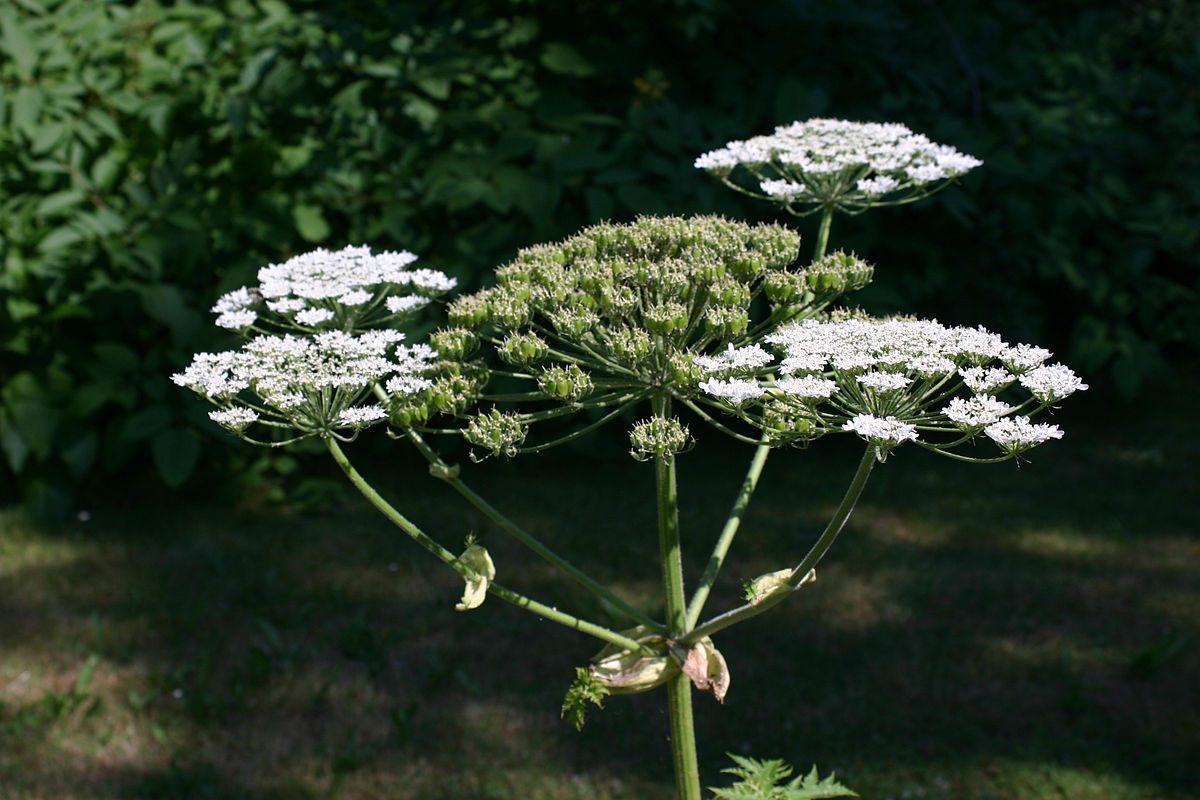FOUND: A Plant that Can Make You Blind
 If you see this plant, stay away. (Photo: Rüdiger Wölk/Creative Commons)
If you see this plant, stay away. (Photo: Rüdiger Wölk/Creative Commons)
A giant hogweed—a white-flowered plant that has the power to cause blindness in humans—has been found growing beside a road in Calhoun County, southwest Michigan.
The Battle Creek Enquirer reports that the Calhoun County Public Health Department is “asking county residents to be cautious” after removing a giant hogweed discovered just outside the town of Battle Creek. Uncommon in the United States, giant hogweed is “a public health hazard that ranks up there higher than poison ivy, poison oak and poison sumac,” according to Michigan’s Department of Agriculture and Rural Development. A member of the Federal Noxious Weeds list, giant hogweed produces a toxic sap that can cause severe skin irritation—including blistering that leads to permanent scarring—and even blindness if the sap comes into contact with your eyes.
The plant, which resembles parsley, Queen Anne’s lace, or cow parsnip, can grow to 14 feet tall. Native to central Asia, it was introduced to the United States around 1917 as an ornamental garden plant. It has since been spotted in New York, Pennsylvania, Ohio, Maryland, Oregon, Washington, Michigan, Virginia, Vermont, New Hampshire and Maine, but reports of unpleasant encounters are rare. Though no other giant hogweeds were found in Battle Creek, Michigan, more may be growing in the wild, says the Enquirer.
Though much rarer in the U.S. than classic summer spoilers like poison ivy, giant hogweed has been causing a lot of trouble in the U.K. this summer, where several people have treated in hospitals severe skin reactions and blistering after coming into contact with the plant. (For the record, if you discover you have touched a giant hogweed, the best approach to minimize harm is to wash the area with soap and water and stay out of the sun for 48 hours.)
Giant hogweed is one of a range of toxic, dangerous, and even potentially lethal plants kept behind a gate marked “These Plants Can Kill” at Alnwick Poison Gardens in England.
Bonus finds: A stolen Stradivarius, recovered after 35 years; the largest feature in the universe; footage of Chris Farley as Shrek.
Every day, we highlight one newly lost or found object, curiosity or wonder. Discover something unusual or amazing? Tell us about it! Send your finds to [email protected].













Follow us on Twitter to get the latest on the world's hidden wonders.
Like us on Facebook to get the latest on the world's hidden wonders.
Follow us on Twitter Like us on Facebook